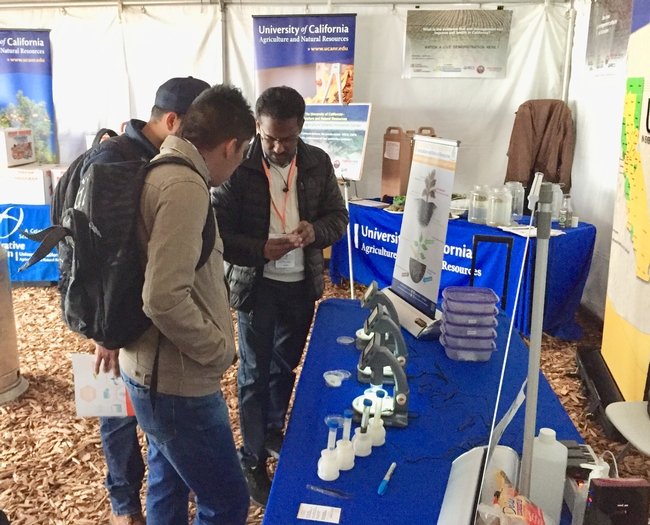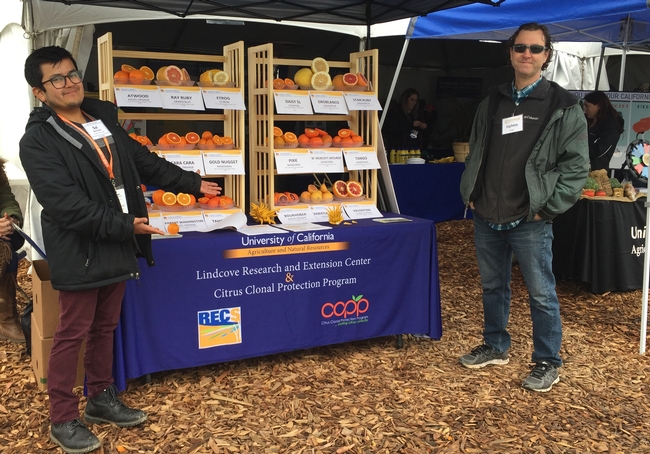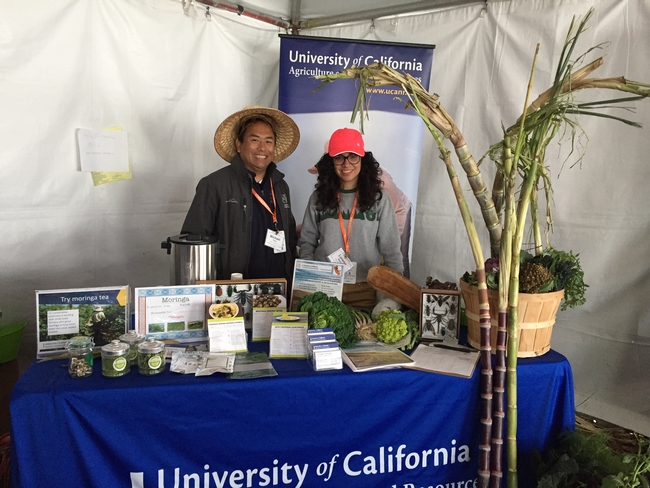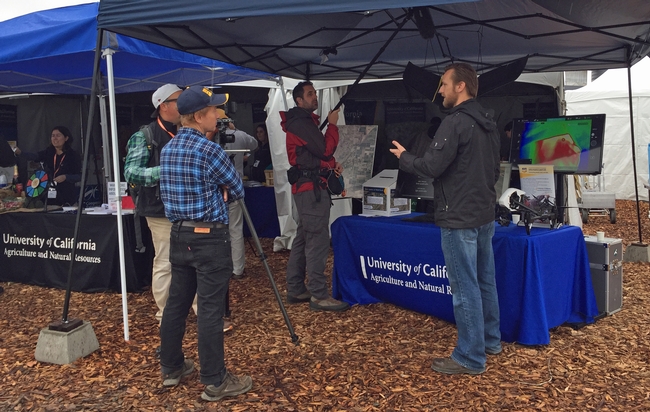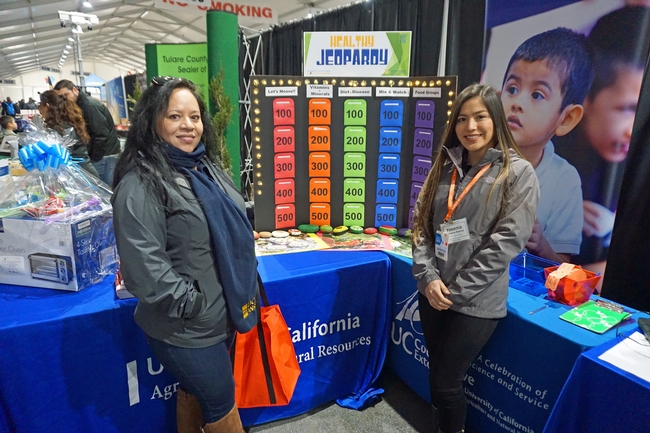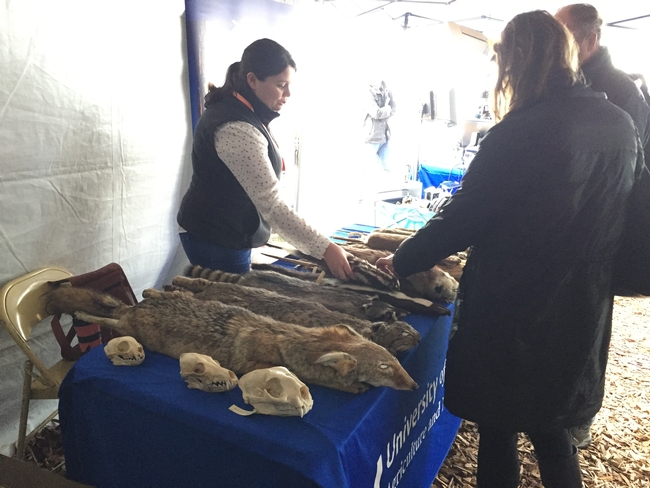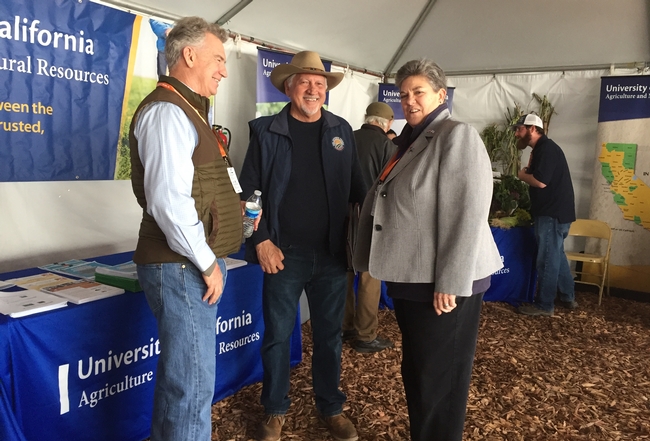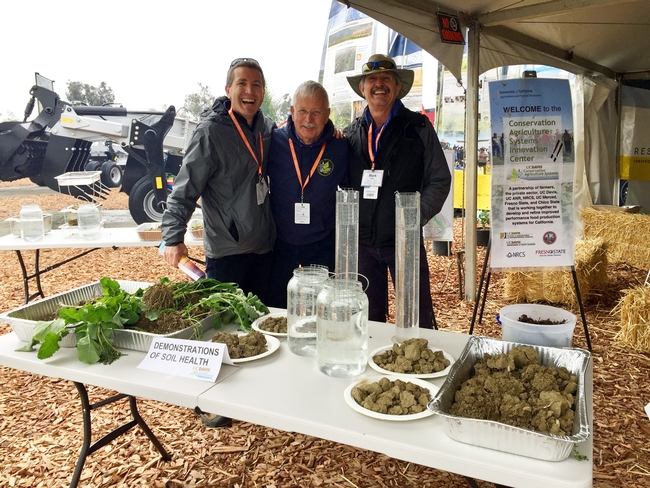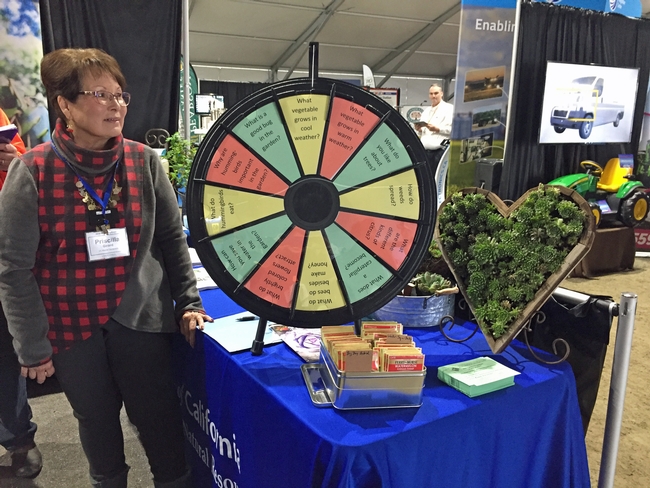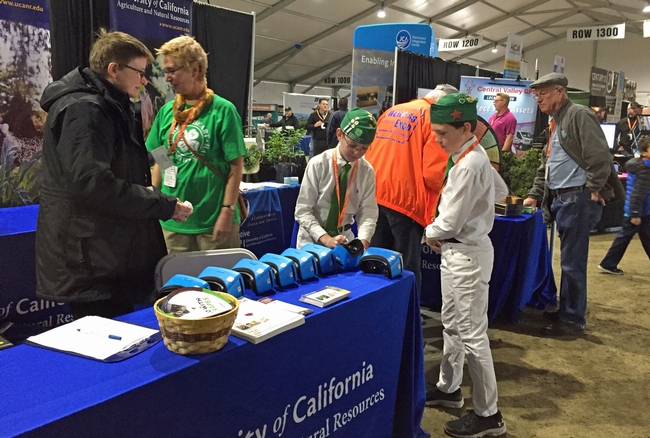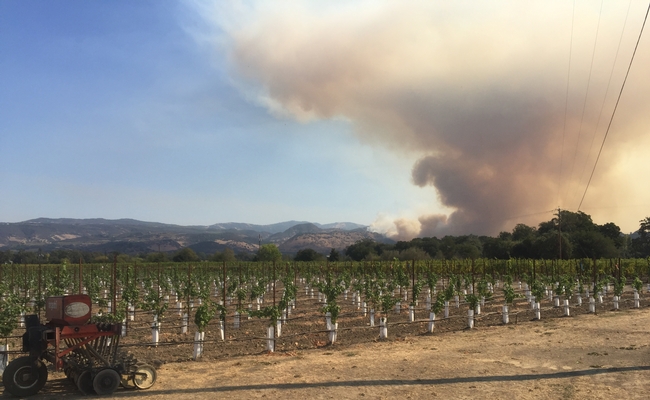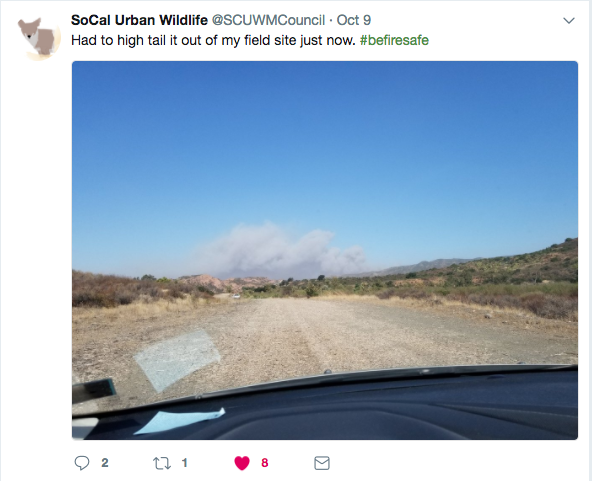Posts Tagged: Niamh Quinn
ANR meets the public at World Ag Expo
People from across California and around the world got to taste new crops, see research demonstrations and learn about several UC ANR activities at the World Ag Expo Feb. 12-14. Despite the cold rainy weather, the world's largest agricultural exposition attracted 102,878 people representing 48 states, the District of Columbia and 65 countries to Tulare.
At an outdoor tent, Beth Grafton-Cardwell, UC Cooperative Extension specialist, Greg Douhan, UCCE citrus advisor, and other researchers, handed visitors fresh Tango citrus grown at the Lindcove Research and Extension Center and told them about their citrus variety research.
Ruth Dahlquist-Willard, UCCE small farms advisor, and Michael Yang, small farms and specialty crops agricultural assistant, encouraged visitors to taste moringa tea. Surendra Dara, UCCE entomology and biologicals advisor, described how Bagrada bugs and other pests under the microscopes can be controlled by microbes. Roger Baldwin, UCCE wildlife specialist, and Niamh Quinn, UCCE urban wildlife conflict advisor, took turns showing taxidermy vertebrate pests and describing their management research.
Jeff Mitchell, UCCE specialist, and Jeff Dahlberg, Kearney Agricultural Research and Extension Center director, gave demonstrations to show the superior health of soils managed with conservation techniques.
Demonstrating the use of high-tech in agriculture, Sean Hogan, Informatics and Geographic Information System academic coordinator, Andy Lyons, IGIS program coordinator, and Jacob Flanagan, IGIS programmer, showed how they use drones and cameras in agricultural research.
Inside Pavilion A, Teresa Rios-Spicer, UCCE nutrition program manager, andYeseniaMedrano, UCCE community education specialist, both from Tulare County, challenged visitors to test their nutrition knowledge by playing Jeopardy! Visitors could spin the UC Master Gardeners prize wheel to answer gardening questions and win seeds. 4-H members invited youth to peer into virtual reality goggles to give them an idea about the fun activities that can be part of joining 4-H.
Frank Mitloehner, UC Cooperative Extension specialist, gave a seminar explaining confusion in the media about the amount of greenhouse gas livestock emit in California and globally. He reviewed the innovations in livestock production that are leading the way to a "greener future" for California and U.S. agriculture.
Beth Grafton-Cardwell, UC Cooperative Extension citrus entomology specialist, and Victoria Hornbaker of the California Department of Food and Agriculture, gave an update on regulatory protocols relating to Asian citrus psyllid and HLB quarantines and the proper transportation of bulk citrus to prevent the spread of the pest and disease.
The California and Dutch AgFoodTech innovation partners reunited in Tulare for a networking luncheon to share their action plan with invited guests and scope the projects.
UCCE spared by October wildfires
California will be dealing with the effects of the October 2017 wildfires for years to come. The Northern California wildfires that ignited Oct. 8 grew into urban conflagrations and burned for days, killing 43 people and destroying at least 8,400 structures.
In Southern California, Niamh Quinn, UC Cooperative Extension human-wildlife advisor, tweeted a photo after outrunning the Canyon Fire 2, which burned over 9,000 acres and destroyed 25 structures.
Brian Oatman, director of Risk & Safety Services, contacted UC Cooperative Extension employees in Sonoma, Napa, Marin, Mendocino, Lake, Butte, Sutter, Yuba and Orange counties and at the Hopland, Sierra Foothill and South Coast research and extension centers.
On Oct. 10, Oatman sent an email to the ANR community giving a status report on the UC ANR offices in the fire zones, saying, “We have heard that all employees are safe.” He added, “In many counties, staff know of 4-H or Master Gardener families who have lost homes or suffered damage.”
In Solano County, 17 UC Master Gardener volunteers, maybe more, lost their homes in the fires. The UC Master Gardener Program quickly set up an online form to connect Master Gardener volunteers throughout the state who wanted to offer lodging, supplies and words of support to fellow volunteers impacted by the fires.
In Sonoma County, UC Cooperative Extension staff and 4-H members helped rescue livestock.
ANR suffered no significant property damage, but some offices closed due to local evacuation orders.
Kaan Kurtural, UC Cooperative Extension viticulture specialist based in Oakville, said the viticulture research station went without electricity for 16 days. They brought in generators from UC Davis.
To help evacuated Californians who returned to their homes recover from fires, Strategic Communications created a story map with links to UCCE county resources.
News reporters sought out several UC ANR experts to explain why the wildfires spread so quickly and burned so intensely and how the fires would affect agriculture. See the ANR News blog for the monthly news roundup for October.
If you would like volunteer or donate to fire recovery efforts, check with local food banks or organizations such as Sonoma County Recovers to find out what is needed. If you would like to contribute to UC Master Gardener volunteers who are in need, you can fill out a survey that was created to connect resources with the affected volunteers: ucanr.edu/mgrelief.

